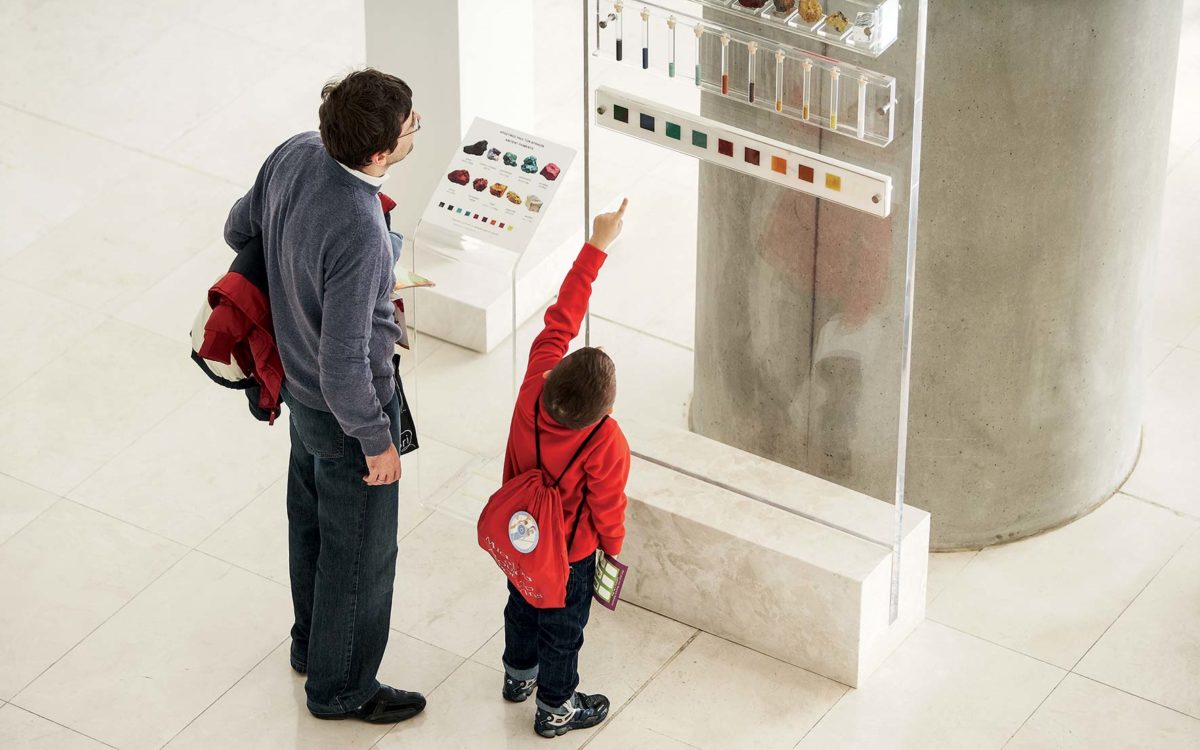There was a time when the owl, an animal that’s intrinsically linked to the myth of the goddess Athena, was my younger daughter’s favorite animal.
She had never seen one of these nocturnal birds of prey, but the marble sculpture of one that adorns the entrance to the Acropolis Museum made a lasting impression.
Similarly, her sister would beg me to style her hair like a Caryatid, as she had studied one of them in the Erechtheion gallery and loved the intricacy of her coiffure.
Museum-goers since infancy, both my daughters have singled out the Acropolis Museum as the place they’d gladly return to again and again. And I think I know why: every time we go back, we discover (or come up with) something new and different to see and do.
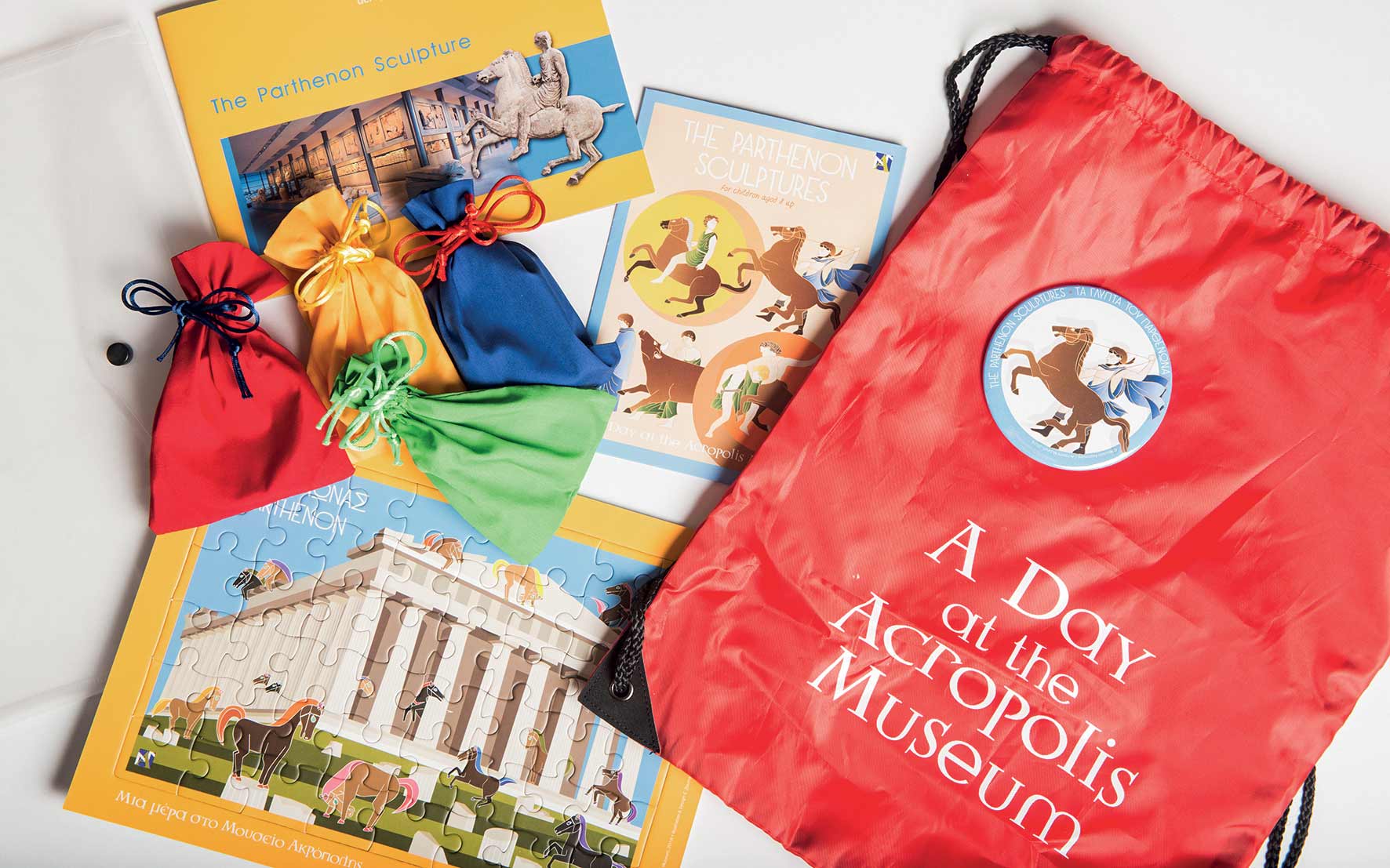
© Angelos Giotopoulos
Little Backpackers
What child doesn’t love rooting into bags or boxes filled with small surprises? The contents of the Family Backpacks loaned out by the Information Desk, right beside the ticket area, excite the children’s imaginations and add some fun to the serious business of touring the exhibition spaces.
These well-designed packs are tailored to different age groups, with various difficulty levels and recommended activities. “In Search of the Goddess of Athens” is dedicated to Athena; the “Parthenon Sculptures” focuses on the Parthenon Gallery; and “Archaic Colors” – my girls’ favorite – is about the collection of Archaic statues that still have some of their original colors. A series of well-designed games involving magnetic stickers, dominoes, memory cards, puzzles and other elements encourage children to search the exhibits for the “tools” needed to complete certain tasks.
Back home, they can continue their tour with online digital games available on the museum’s website. Of these, we’ve accessed the coloring game to make our own versions of the Peplos Kore (here), and we’ve also asked the flying robot Glafka to show us around the restoration work that’s being carried out on the Acropolis monuments (here).
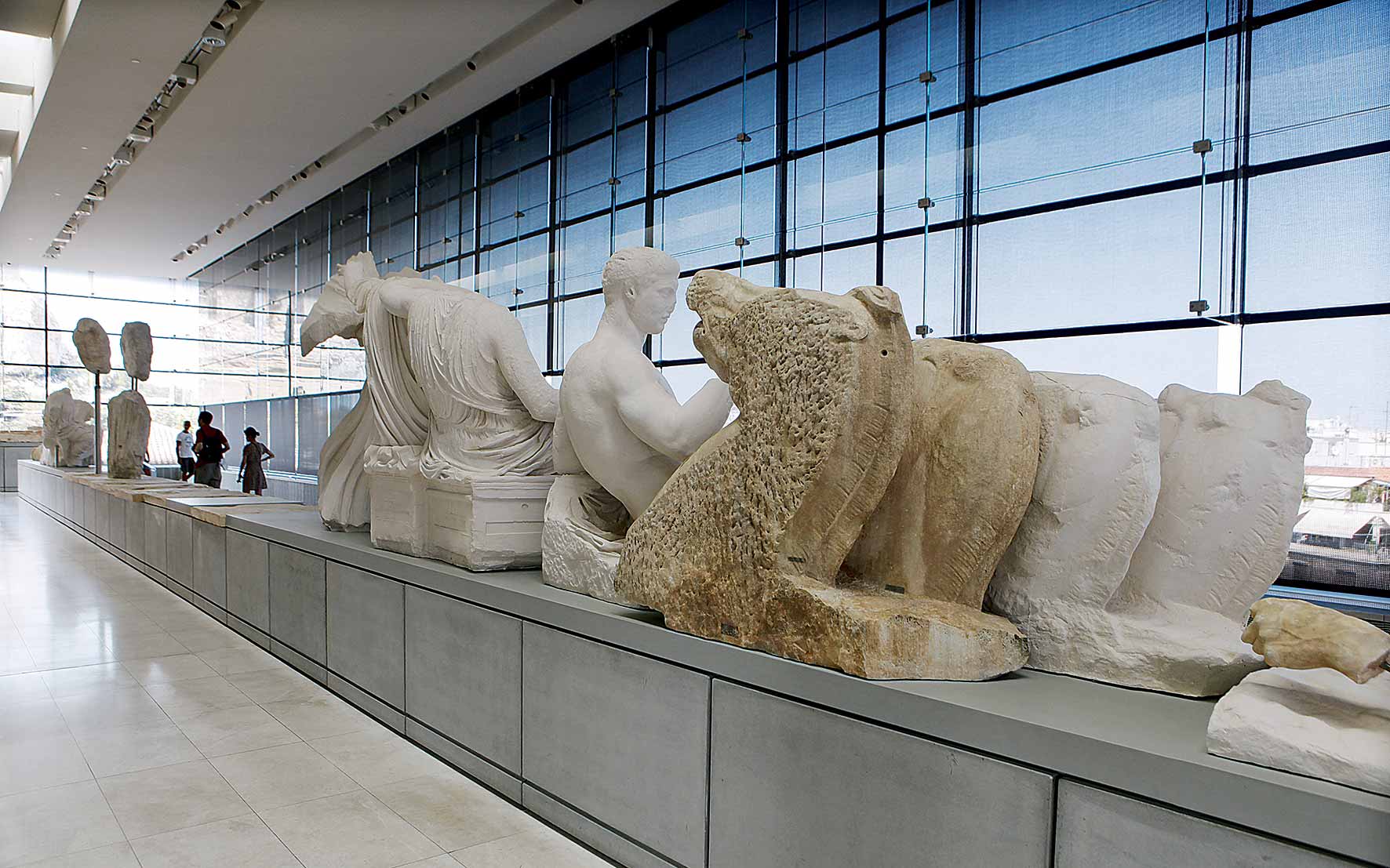
© Katerina Kampiti
Time-saving manuals
Sometimes parents need to keep the museum visit short; whether you have other commitments or you’re simply worried about your little ones growing restless, the pamphlets distributed free of charge by the Information Desk will help you plan a well-targeted tour that will keep them engaged.
Using the pamphlet maps and guided by Iris – the personification of the rainbow and a messenger of the gods – you can help youngsters aged three to five spot well-known depictions of animals, and they can do it while wearing an owl or lion mask made from the pamphlet’s last page.
For kids aged five to seven, you can take a family tour of the exhibition halls. Children aged eight to 10 are encouraged to seek depictions of Hermes, Athena, Demeter, Poseidon and the other gods of Olympus on vessels and the Parthenon pediments; or to closely examine ten selected exhibits, chosen to symbolize the museum’s 10th anniversary, and design their own greeting cards.
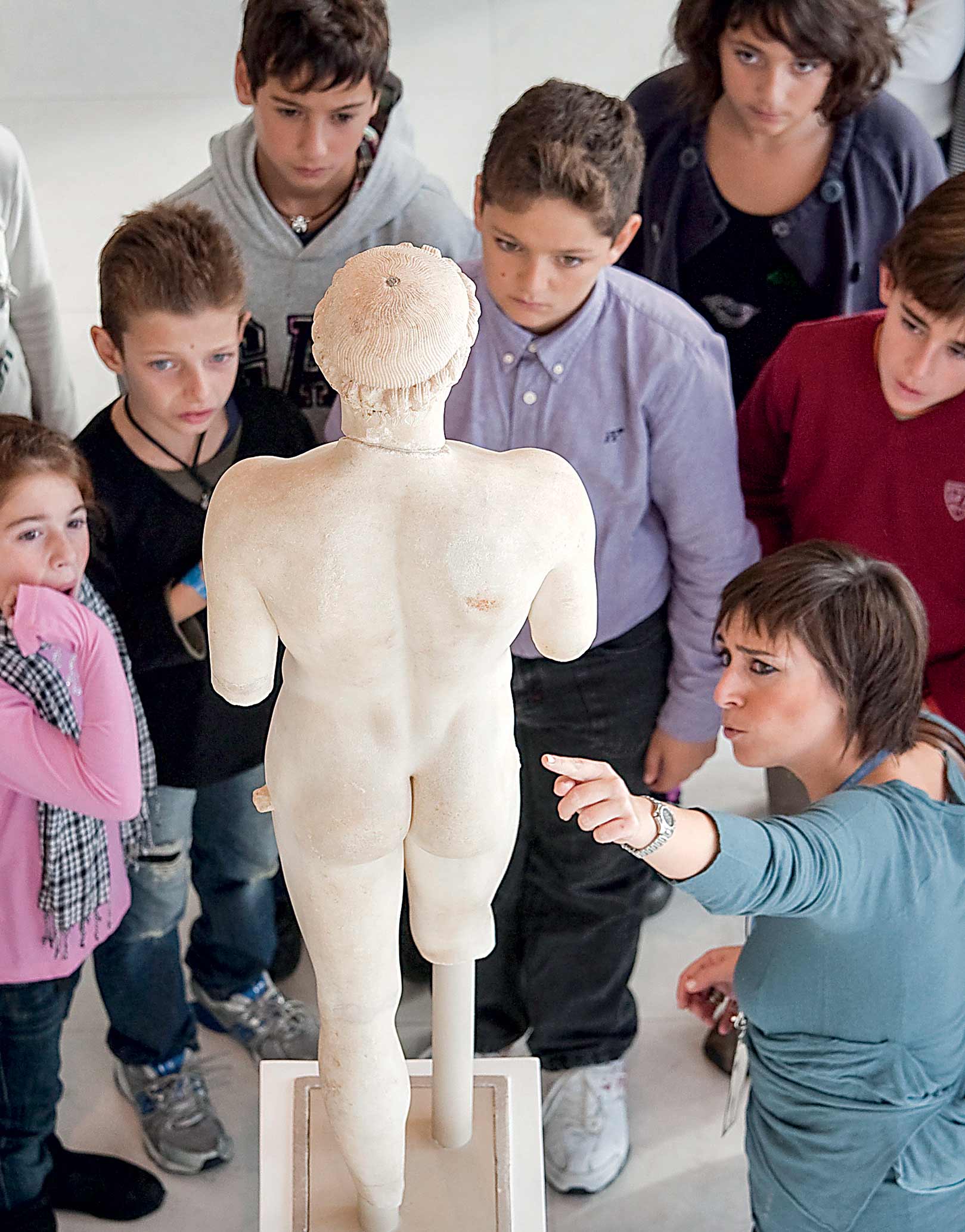
© Henning Bode/LAIF
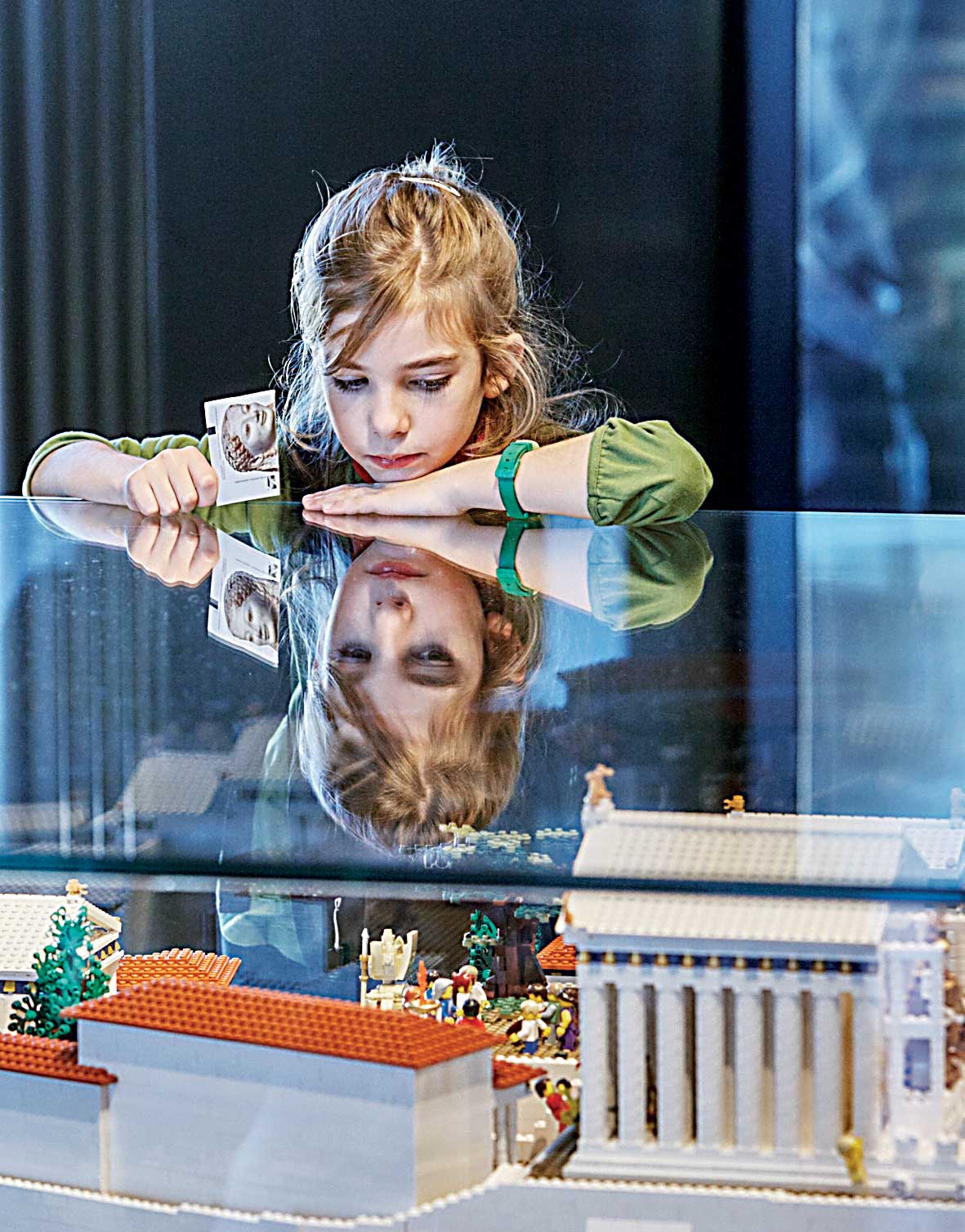
© Giorgos Vitsaropoulos
Building the Acropolis piece by piece
Don’t be surprised if you end up spending as much time on the impressive model of the Acropolis composed of 120,000 LEGO™ bricks – located on the second floor by the restaurant –as you did on all the other activities and exhibits.
Donated by the Nicholson Museum of Australia’s University of Sydney, this is, without a doubt, the Acropolis Museum’s greatest highlight for most youngsters. They can spend hours looking at all the cool and sometimes outlandish details: Gandalf from “The Lord of the Rings” climbing up the Acropolis; Alexander the Great in conversation with the philosopher Diogenes; gigantic statues of Athena Promachos, where the goddess is depicted as a warrior; Lord Elgin supervising the removal of the Parthenon sculptures as the sculptor Pheidias looks on angrily; and Agatha Christie having her picture taken on the Sacred Rock.
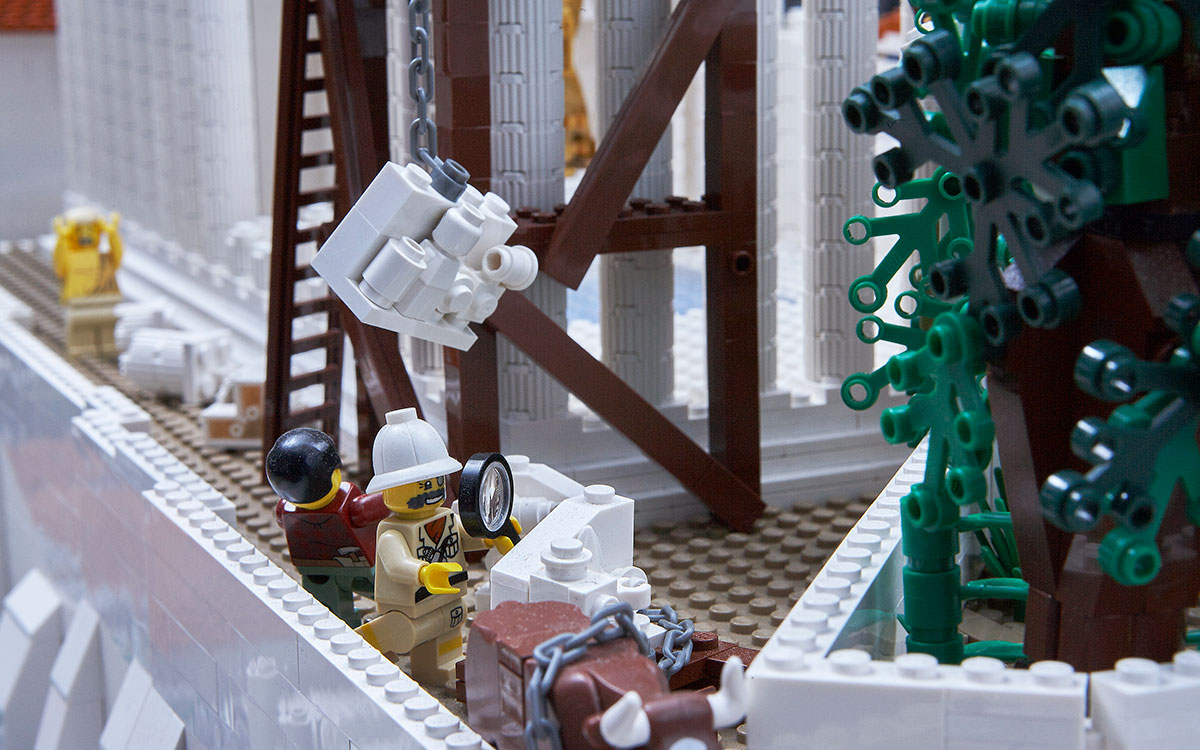
Books and Gifts
Complete your visit with a souvenir from the gift shop. The children’s department in the second-floor bookshop has a great selection of coloring books, as well as books on history and mythology. It also has comics and adaptations of Aristophanes’ comedies. Titles are arranged by language (Greek, English, German, Italian, French, Spanish, Turkish and Chinese); the books in the English-language section are arranged according to age group as well.
Should your children not want to part with their red backpacks, the ground-floor gift shop sells some of the items they contain, such as the Parthenon puzzle or the memory game with depictions of Athena.

